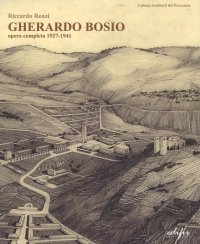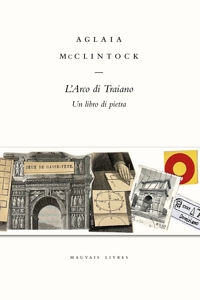Gio. Benedetto Castiglione Genovese. Il Grechetto a Roma. Committenza e opere
A cura di Orlando Anna e Francesco Rotatori.
Genova, 2023; br., pp. 304, ill. col., cm 23x29.
prezzo di copertina: € 150.00
|
Libri compresi nell'offerta:
Gio. Benedetto Castiglione Genovese. Il Grechetto a Roma. Committenza e opere
A cura di Orlando Anna e Francesco Rotatori.
Genova, 2023; br., pp. 304, ill. col., cm 23x29.
OMAGGIO (prezzo di copertina: € 150.00)
Giovan Antonio Dosio Da San Gimignano Architetto e Scultor Fiorentino tra Roma, Firenze e Napoli
A cura di Emanuele Barletti.
Fotografie di BACHerin Paolo e Saverio De Meo.
Prima edizione 2011.
Firenze, 2011; ril., pp. 844, ill. b/n e col., tavv., cm 24x28,5.
OMAGGIO (prezzo di copertina: € 98.00)
Vincenzo Meucci
Co-Editore: Cassa di Risparmio di Firenze.
Firenze, 2015; cartonato, pp. 304, ill. col., cm 25x29,5.
(Arte).
OMAGGIO (prezzo di copertina: € 50.00)
Gherardo Bosio. Opera Completa 1927-1941
Firenze, 2016; br., pp. 368, ill. b/n e col., cm 23x28.
(Architetti del Novecento. Storia e archivi).
OMAGGIO (prezzo di copertina: € 60.00)
Jan van Kessel I (1626-1679). Crafting a Natural History of Art in Early Modern Antwerp
Baadj Nadia
Harvey Miller Publishers
Testo Inglese.
London, 2016; ril. in tela, pp. 350, 60 ill. b/n, 20 ill. col., cm 22x28.
(Studies in Baroque Art (HMSBA 5)).
collana: Studies in Baroque Art (HMSBA 5)
ISBN: 1-909400-23-8 - EAN13: 9781909400238
Soggetto: Pittura e Disegno - Monografie
Periodo: 1400-1800 (XV-XVIII) Rinascimento
Luoghi: Europa
Testo in: 
Peso: 1.72 kg
The Antwerp artist Jan van Kessel the Elder (1626-1679) was esteemed throughout Europe for producing finely-wrought, miniature paintings on copper that depict a wide range of flora and fauna, exotic landscapes, and objects of natural artistry (e.g. shells, coral, precious stones). The 'natural' world presented in Van Kessel's art was not a transparent window onto nature, however, but instead was ambitiously crafted through the artist's reappropriation of Antwerp's artistic traditions, material culture, and artisanal knowledge practices. Through a combination of wit, technical virtuosity, self-referentiality, and allusions to local art-historical lineage, Van Kessel's paintings encourage viewers to simultaneously think about art, in terms of collecting, connoisseurship, citation, and media, and think anew about nature.
This study uses Van Kessel's art as a distinctive lens through which to examine the relationship between craft, curiosity, and the pursuit of natural knowledge in the early modern period. Each chapter situates Van Kessel within a particular context where art and natural history intersected in late seventeenth-century Antwerp. Taken together, these investigations reveal how his production responded to a unique convergence of circumstances in that city which included the growth of a popular, commercial strand of natural history, a thriving culture of art collecting and connoisseurship focused on local artists, and a burgeoning luxury industry. Van Kessel's material and conceptual interventions into the representation of nature, such as his innovative, painted "cabinets without drawers" and witty signatures formed from insects and snakes, enabled him to redefine the scope of natural historical illustration and negotiate the value and status of the small-format cabinet picture.
Stefano Russo € 24.22
€ 25.50 -5 %
Un Uomo un Quadro. Edoardo Pollak e la Deposizione nel Sepolcro
Incantesimi runici e sigilli magici. Un antico grimorio islandese
















